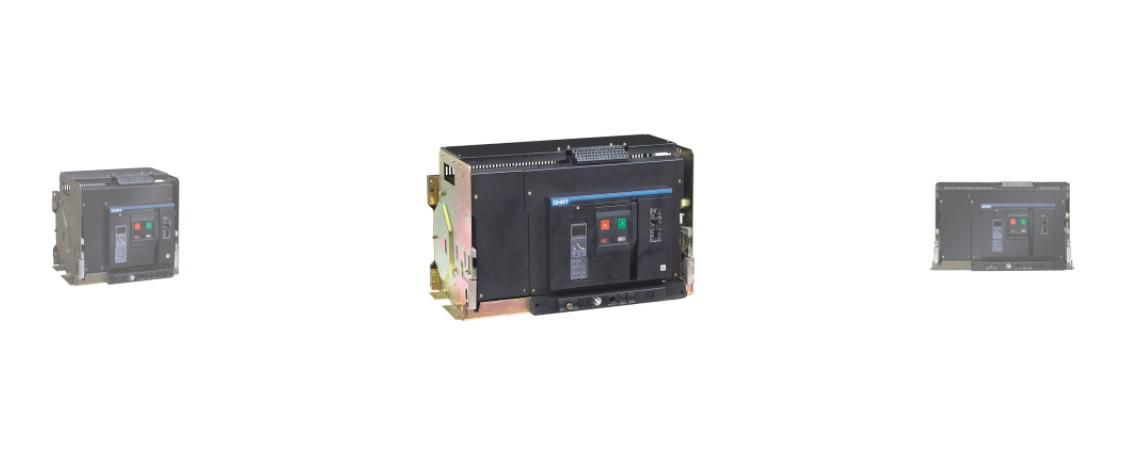A chint circuit breaker is a type of electrical device that is used to manually interrupt any circuit that does not travel a great distance under normal conditions. A circuit breakers principal duty is to break the circuit in the event of a fault situation such as a short circuit, overcurrent, and so on. Circuit breakers generally activate or safeguard the system. Some circuit breaker-related devices, such as relay switches and fuses, are also employed for the same purpose. Circuit breaker applications are mostly used in industrial and power systems to safeguard and manage different circuit components such as transformers, switch gears, motors, alternators, generators, and so on. The air circuit breaker is one of several types of circuit breakers used in industry.
What exactly is an air circuit breaker?
An air circuit breaker (ACB) is a type of electrical device that provides overcurrent and short circuit protection for electrical circuits rated from 800 to 10,000 amps. It is primarily utilized in low voltage applications with voltages less than 450V. This system may be found in the Distribution Panel (under 450V). This article will explain how a Water Circuit Breaker works. An air circuit breaker is a type of circuit breaker that uses air as an arc extinguishing medium at a certain atmospheric pressure. Today's market offers a variety of air circuit breakers and gear shifters that are long-lasting, high-performing, and simple to install and maintain. The oil circuit breaker has been entirely replaced by an air circuit breaker.
Construction of an Air Circuit Breaker
The following internal and exterior components can be used to build an air circuit breaker. ACB external parts primarily consist of an ON/OFF button, an indicator for the main contact position, an indicator for the energy storage mechanism, an LED indicator, a RST button, a controller, an identifier nameplate, a handle for energy storage, a display, a shake, a fault trip rest button, a rocker repository, and other components.
Construction by ACB
The internal components of an ACB primarily consist of a steel sheet supporting structure, a current transformer used to protect the travelling unit, a pole group isolation box, a horizontal terminal, an arc chamber, a travelling unit for protection, a terminal box, a closing spring, a CB opening and closing control, plates for moving arc and main contacts, and plates for main and fixed arc contacts.
Principle of operation
The functioning concept of an air circuit breaker differs from that of other types of CB. We know that the CB's primary job is to prevent arc recovery where the distance between the contacts can sustain the system recovery voltage.
Air circuit breakers do the same thing, but in a different fashion. When an arc is interrupted, the arc voltage replaces the supply voltage. This stress is defined as the minimum tension necessary to keep the arc stable. A circuit breaker may be used to boost the supply voltage in three distinct ways. A cooling arc plasma can be used to raise the arc voltage.
When the arc plasma temperature and particle velocity are lowered, an extra voltage gradient is necessary to keep the arc going. By separating the arc into series, the arc voltage may be raised. The arc voltage can be raised once the arc route has been lengthened. When the arc path length is increased, the path resistance increases, as does the arc voltage utilised over the arc route, allowing the arc voltage to be raised.
The operating voltage range is 1KV.It has two sets of connections, one of which utilises electricity and the other of which is built of copper. Carbon may be used to make another pair of connections. The first main contact will open when the circuit breaker is flipped.When the main contact is opened, the arc contact stays linked. Arc is begun once an arc contact is shared. Average voltage circuit breakers are no longer in use.
Working Air Circuit Breaker
Air circuit breakers function with their contacts in the open air. Their arc cooling control approach differs significantly from the oil circuit breaker method. They've long been used for low-voltage problems, but they're increasingly being employed to replace high-voltage oil breakers. The diagram below depicts the operation of an air breaker circuit.




 Photo by
Photo by  person holding black smartphone on white textile
Photo by
person holding black smartphone on white textile
Photo by  StableDiffusion
StableDiffusion
 Photo by
Photo by  Photo by
Photo by 
 roommate as a therapist
StableDiffusion
roommate as a therapist
StableDiffusion
 woman in white shirt eating pizza
Photo by
woman in white shirt eating pizza
Photo by  person holding remote pointing at TV
Photo by
person holding remote pointing at TV
Photo by  person holding assorted clothes in wooden hanger
Photo by
person holding assorted clothes in wooden hanger
Photo by  a couple of
a couple of  friends cleaning apartment
StableDiffusion
friends cleaning apartment
StableDiffusion
 man driving car during golden hour
Photo by
man driving car during golden hour
Photo by  bacon strips and melted cheese topped fries on oval white and blue platter with gray stainless steel forks
Photo by
bacon strips and melted cheese topped fries on oval white and blue platter with gray stainless steel forks
Photo by  selective focus photography of eyeshadow palette
Photo by
selective focus photography of eyeshadow palette
Photo by  brown wooden framed white padded chair in between green indoor leaf plants inside bedroom
Photo by
brown wooden framed white padded chair in between green indoor leaf plants inside bedroom
Photo by  women forming
women forming  taking
taking  man in red polo shirt pouring wine on clear wine glass
Photo by
man in red polo shirt pouring wine on clear wine glass
Photo by  woman in black jacket standing on road during daytime
Photo by
woman in black jacket standing on road during daytime
Photo by 
 StableDiffusion
StableDiffusion
 StableDiffusion
StableDiffusion
 student thinking i shouldnt have procrastinated all semester
StableDiffusion
student thinking i shouldnt have procrastinated all semester
StableDiffusion
 Photo by
Photo by  Photo by
Photo by  Photo by
Photo by  StableDiffusion
StableDiffusion
 StableDiffusion
StableDiffusion
 Photo by
Photo by  Photo by
Photo by 


 Lumiere figure at the Disney Store at the Ala Moana Shoppi… | Flickr
Lumiere figure at the Disney Store at the Ala Moana Shoppi… | Flickr












